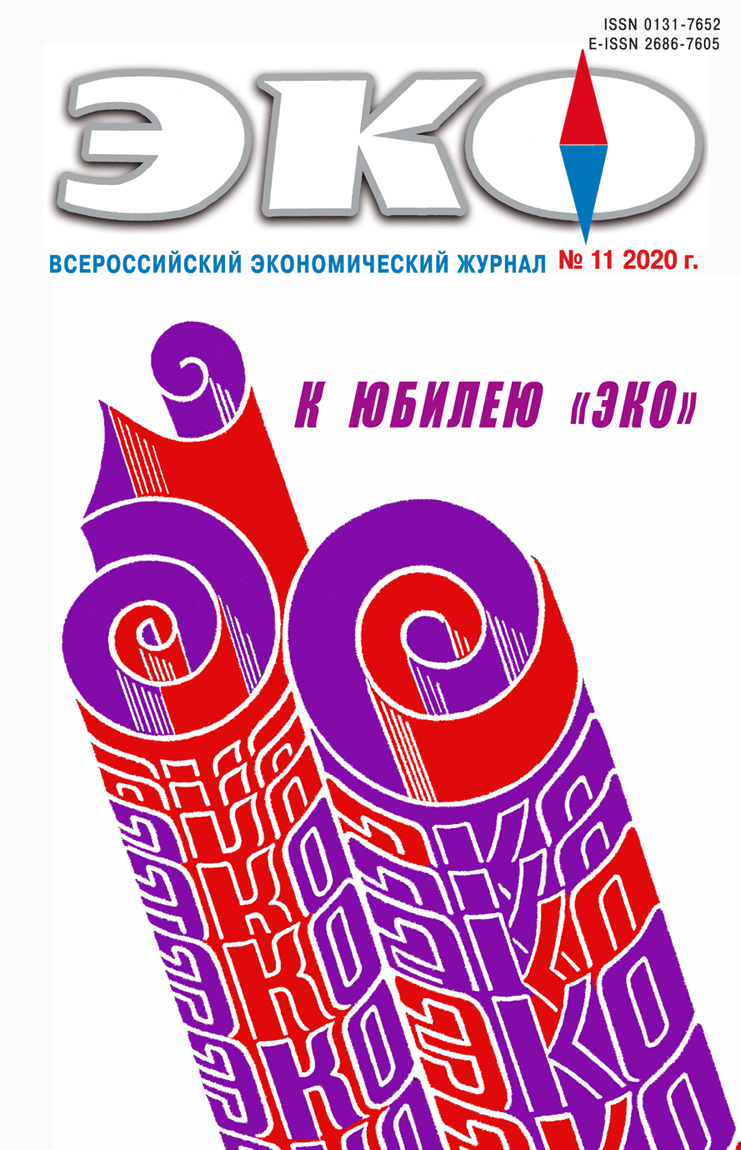MONITORING OF ECONOMIC TRANSFORMATION
Published 2020-10-31
Keywords
- meat industry,
- food embargo,
- sanctions,
- coronavirus pandemic,
- food independence
- food security,
- pandemic,
- expansion into foreign markets ...More
How to Cite
1.
Kapoguzov Е, Chupin Р, Harlamova М. Import Substitution in the Meat Industry: Expansion for One Dollar. ECO [Internet]. 2020 Oct. 31 [cited 2025 Dec. 15];50(11):104-23. Available from: https://ecotrends.ru/index.php/eco/article/view/4149
Abstract
Theagro-industrial complex faced another unexpected strength test. Reduced demand, especially due to suspended operation of catering and shopping centers, reduced incomes and new institutional barriers caused by the pandemic and protectionist policies, demonstrated problems and advantages of accelerated development.The food embargo and the current policy of import substitution “cleared the way” for domestic producers in the saturated competitive food market and ensured augmented demand and supply of Russian products respectively. However, protectionist policies produced some expected results precisely in the created “greenhouse conditions”. In the current situation of the coronavirus pandemic, a significant reduction in demand against the background of increased supply, which was achieved due to state support and absence of foreign competition, is now putting pressure on prices. For this reason, meat producers are intensively looking for new markets. Analysis of import substitution results, which at this stage is already exhausting its potential, showed the inefficiency of expansion policy under existing conditions. Reduction in state support for the agro-industrial complex that has become a political priority manufacturers point out as the main risk of further development.References
- Барсукова С. Ю. Аграрная политика России //Общественные науки и современность.2017. № . 5. С. 31–45.
- Барсукова С. Ю. Дилемма «фермеры-агрохолдинги» в контексте импортозамещения // Общественные науки и современность.2016. Т. 5. С. 63–74.
- Бородин К. Г. Экономическая доступность продовольствия: факторы и методы оценки // Экономический журнал Высшей школы экономики.2018. Т. 22. № 4. С. 563–582. doi:10.17323/1813–8691–2018–22–4–563–582.
- Капогузов Е. А., Чупин Р. И., Харламова М. С. Институциональные альтернативы продовольственного эмбарго в условиях новой волны антироссийских санкций (на материалах мясной промышленности) // JournalofEconomicRegulation (Вопросы регулирования экономики). 2017. Т. 8. № 3. С. 23–35.
- Нуреев Р. М., Бусыгин Е. Г. Экономические санкции запада и российские антисанкции: успех или провал? // Journalofinstitutionalstudies (Журнал институциональных исследований).2016. Т. 8. № 4. С. 58–79.
- Нуреев Р. М., Петраков П. К. Рядовой потребитель: бремя экономических санкций против России // JournalofEconomicRegulation (Вопросы регулирования экономики). 2015.Т. 6. № 3. С. 40–60.
- Пожидаева Е. С.. Импортозамещение продовольственной продукции в России: статистическое исследование // Вопросы статистики.2016. № 10. С. 57–63.
- Тютюник В. В. Продовольственная независимость региона // Пространственная экономика. 2016. № 2. С. 168–182.
- Фрумкин Б. Е. Агропромышленный комплекс России в условиях «войны санкций» // Вопросы экономики. 2015. № 12. С. 147–153.
- Шаклеина М. В., Швецова К. Д., Шаклеин К. И. Оценка влияния санкций на рынок мяса и мясной продукции в России: анализ состояния и перспектив развития рынка // Проблемы развития территории. 2018. № 1(93). С. 57–70.
- Cortright D., Lopez G. A. Smart Sanctions: Targeting Economic Statecraft. N.Y.: Rowman & Littlefield.2002.
- Oskarsson K. Economic Sanctions on Authoritarian States: Lessons Learned // Middle East Policy Council.2012. Vol. 20(4). Pp. 88–102.

